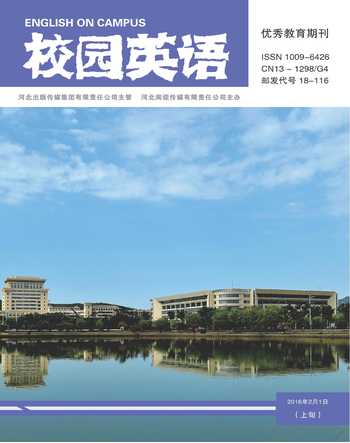Analysis of Organizing and Writing an English essay
2016-05-30刘宁
【Abstract】An essay is a group of closely related paragraphs dealing with a single topic or idea. Usually, one paragraph, called the thesis paragraph states the main idea of the essay. All the other paragraphs must be related to this thesis paragraph. These other paragraphs further explain or support the main idea. So good essay always contains three parts: a beginning, a middle, and an end.
【Key words】essay; paragraph; thesis; body; conclusion
I. The thesis Paragraph of an essay
The thesis paragraph of your essay serves three very important functions and must be written with great care. First, a good thesis paragraph catches the readers attention. Second, it gives the reader an idea as to what essay is about. And third, a quick view of the organization of the essay to follow. For this reason, a good writer avoids such dull and uninteresting statements as these:
a. In this paper, I am going to tell you about the origins of jazz.
b. There are three important reasons why automobiles should be banned from our cities.
There is nothing here to catch the readers attention, nothing to make him want to read further. It is true that the statements tell us what the essays are about, but how wooden and weighty and uninteresting compared with the following:
a. The roots of American jazz were planted long before this century was born. These roots were the beat, the music of the brass bands and the blues—three roots which eventually joined together to form the most American of music—Jazz.
b. The automobile has got to go! We have reached a point in the history of our cities where we can no longer allow this primitive mode of transportation to eat up our land, pollute our atmosphere, and press our citizens into financial ruin.
In each of these thesis paragraphs, not only has the writer given an indication of what his essay will be about, but he has done so in a manner that catches the readers attention.
There is no “best”way to begin an essay. How the writer chooses to introduce his essay will depend on his purpose in writing and who his audience is.
II. The Body of an essay
The body is the longest part of the essay. It provides the explanation, discussion or support for the thesis statement. It is here that the ideas indicated in the thesis paragraph are further developed or explained.
There are three important points concerning the body of the essay;
1. The essay is always divided into paragraphs. The division of the essay into paragraphs has a psychological effect upon the reader. Often, if he sees a page covered with writing, with no bland space to relieve the tedious of the page, he may not read any further.
Because each paragraph contains a new idea, the indentation of the paragraph indicates to the reader that he is moving to the next point of development, or the next point of information in the essay.
2. It is a general rule that body should contain at least three points and never less than two points. These points should be presented in logical sequence. This sequence is determined by the purpose of the essay and by the information itself and should be decided when the outline is planned.
3. Each paragraph of the essay usually begins with a topic sentence. Just as the thesis statement of the essay indicates your previous study, gives an indication as to what the paragraph will be about.
III. The conclusion of an essay
Now that you have finished the body of your essay, your final step is to write the conclusion. The concluding paragraph ties all the ideas together and indicates to the reader that you are finished.
The conclusion of an essay is important because it is often the part that gives the reader deepest impression. Not every essay needs a separate concluding paragraph. For a short essay, the last paragraph of the body, even the last sentence of that paragraph, may serve as the end , so long as it can give the reader a feeling of completeness.
Concluding paragraphs should be short and forceful made up mainly of restatements or summaries or the points that have been discussed. No new ideas should be introduced in a concluding paragraph.
References:
[1]Munday,j.Introducing translation studies; theories and application[M].Shanghai:SFLEP,2010.
[2]Nida,E.A.language and Culture: Contexts in Translating[M].Shanghai: Shanghai Foreign Language Education Press,2001.
[3]Grice,P.Logic and Conversation[M].New York: Academic Press,1975.
作者简介:刘宁(1998-),女,汉族,河北邢台人,邢台市第一中学高三学生,主要研究方向:历史文学,应用英语,法学。
